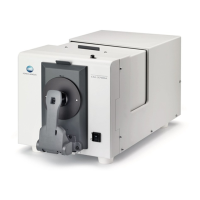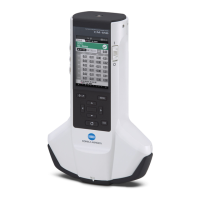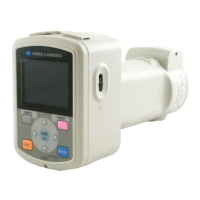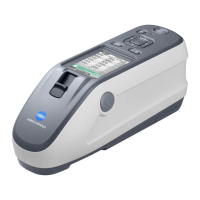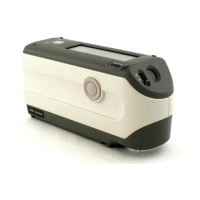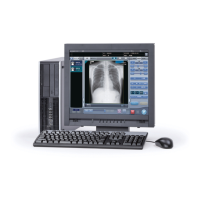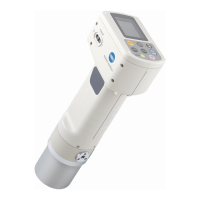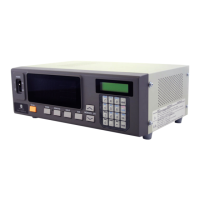30
⿎
Measuring Reflected Colors
The flow of measurement is shown below.
The geometry of the CM-3600A conforms to CIE No.15, ISO 7724/1, ASTM E 1164, DIN 5033 Teil 7, and JIS
Z 8722 condition c (diffused illumination/perpendicular viewing system) standards, and offers both di:8° (SCI:
specular component included ; Total reflectance) and de:8° (SCE: specular component excluded ; Diffuse
reflectance) measurements.
① Light from the pulsed xenon lamps are diffused by
reflection from the inner surface of the integrating
sphere, and finally illuminate the specimen uniformly.
② a. The light reflected by the specimen surface at an angle of 8° to the normal to the surface
is received by the specimen-measuring optical system and guided to the sensor.
b. The diffused light in the integrating chamber is received by the illumination-
monitoring optical fiber and guided to the sensor.
③ The light from the specimen-measuring optical fiber and from the illumination-monitoring optical fiber
is divided into each wavelength component and projected onto the sensor array sections, which
convert the light into proportional currents and output the currents to the analog processing circuit.
Memo
• By using the outputs from the specimen-measuring sensor and the illumination-monitoring
sensor for calculations, compensation for slight differences in the spectral characteristics
and intensity of the illumination light is performed (double-beam system).
⿎
Measuring Transmitted Colors
The flow of measurement is shown below.
The geometry conforms to CIE No. 15, ASTM E1164, DIN 5033 Teil 7, and JIS Z 8722 condition g,
and offers di:0° (SCI: Total transmittance) and de:0° (SCE: Diffuse transmittance) measurements.
① Light from the pulsed xenon lamps are diffused by
reflection from the inner surface of the integrating sphere
and the surface of the white calibration plate covering the
reflectance measurement aperture, and finally illuminate the specimen in the transmittance chamber.
② a.
The light transmitted by the specimen is received by the specimen-
measuring optical system and guided to the sensor.
b. The diffused light in the integrating chamber is received by the illumination-
monitoring optical fiber and guided to the sensor.
③ The light from the specimen-measuring optical fiber and from the illumination-monitoring optical
fiber is divided into each wavelength component and projected onto the sensor array section, which
convert the light into proportional currents and output the currents to the analog processing circuit.
Memo
• By using the outputs from the specimen-measuring sensor and the illumination-monitoring
sensor for calculations, compensation for slight differences in the spectral characteristics
and intensity of the illumination light is performed (double-beam system).
lIIumination/Observation System
① Illumination
Light from xenon
lamps diffuse in the
integrating sphere
and illuminate the
specimen uniformly.
① Illumination
Light from xenon
lamps diffuse in the
integrating sphere
and illuminate
the specimen.
② Receiving
a. Light reflected
by the specimen
are received.
b. Light diffused in the
integrating sphere
are received.
② Receiving
a. Light passing through
the specimen
are received.
b. Light diffused in the
integrating sphere
are received.
③ Sensing
Light from the specimen-measuring and
illumination-monitoring optical fibers are
transmitted to sensors, where the light in the
wavelength range of 360 to 740 nm is divided
into 10 nm-pitch components and projected
onto the sensor array sections, which
convert the light intensity of each component
into proportional currents and output the
currents to the analog processing circuit.
③ Sensing
Light from the specimen-measuring and
illumination-monitoring optical fibers are
transmitted to sensors, where the light in the
wavelength range of 360 to 740 nm is divided
into 10 nm-pitch components and projected
onto the sensor array sections, which
convert the light intensity of each component
into proportional currents and output the
currents to the analog processing circuit.
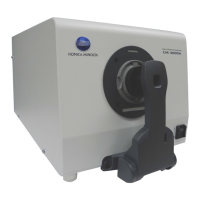
